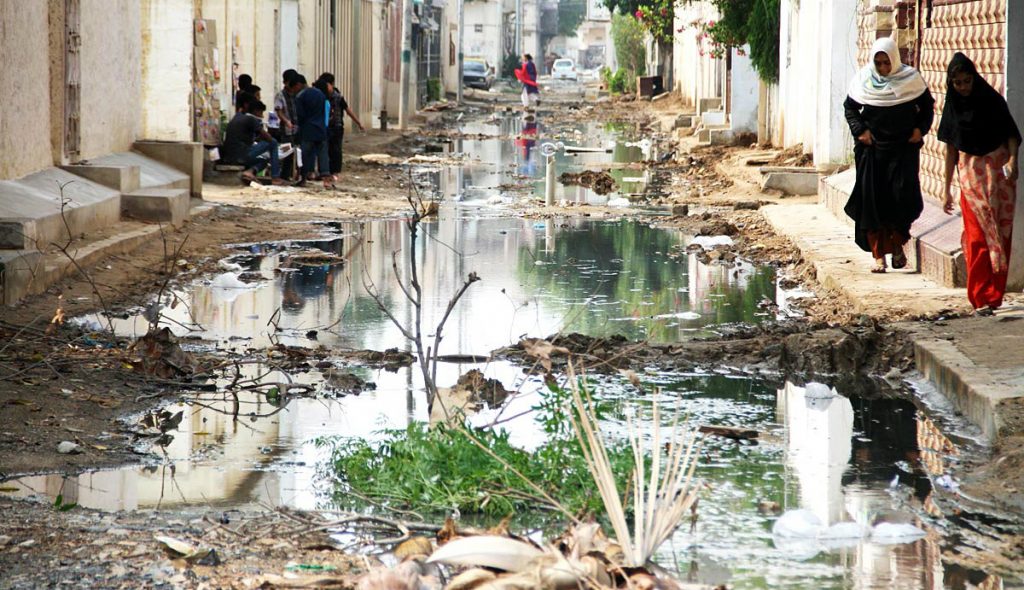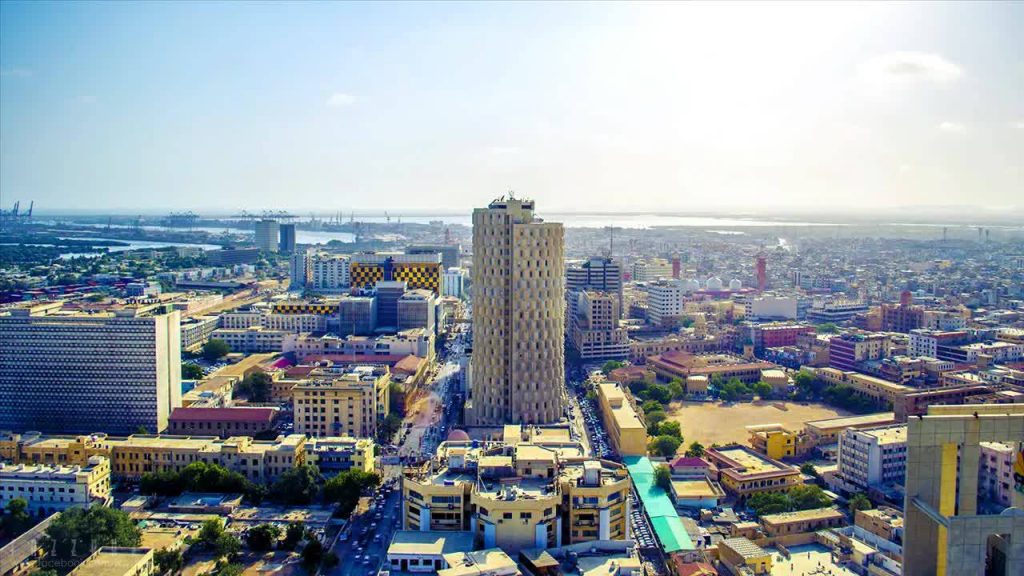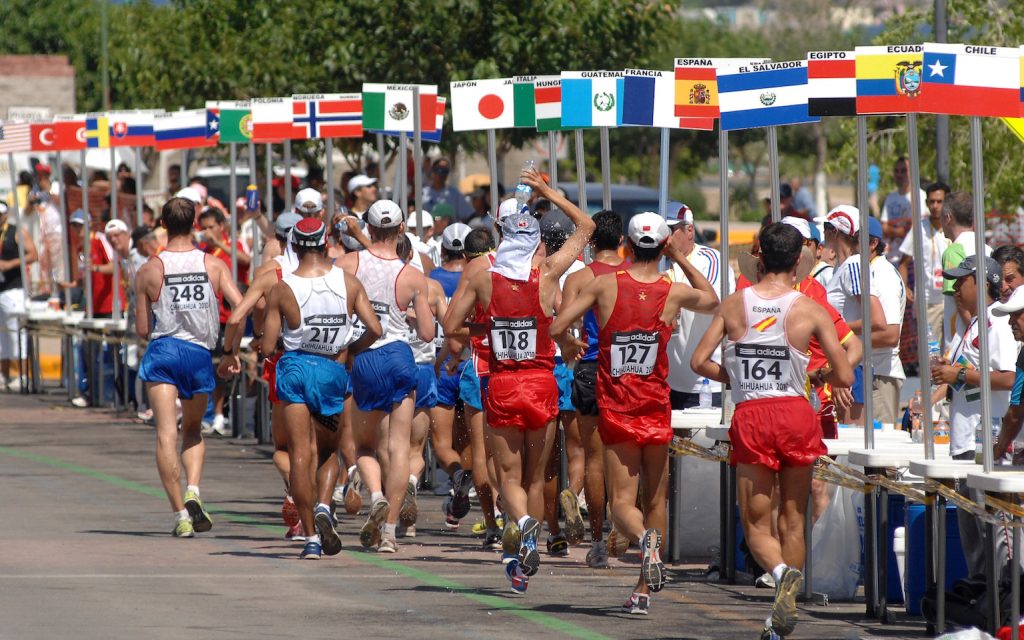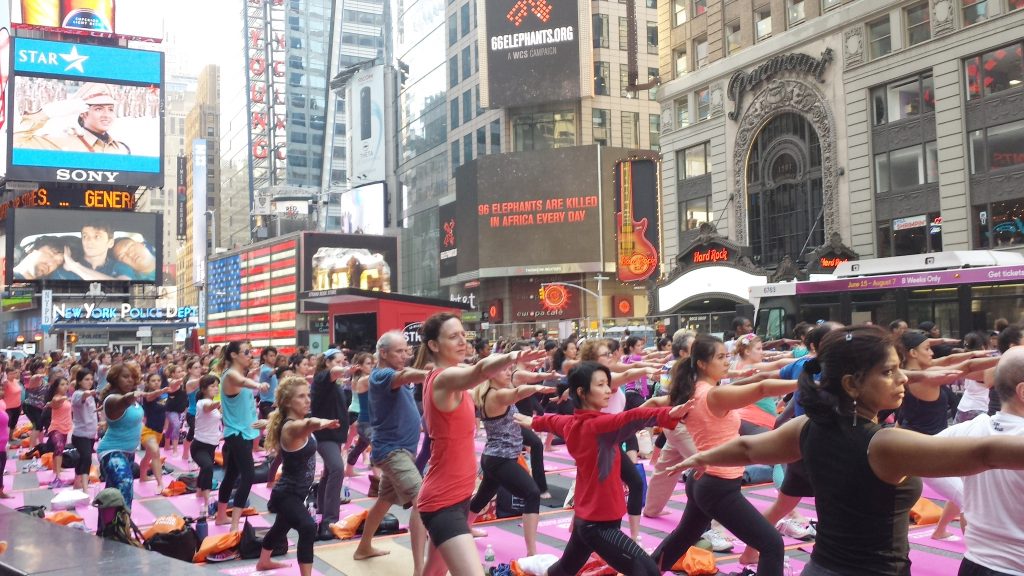Karachi: Broken City
By Romana Khan | Newsbeat National | Special Report | Published 8 years ago
According to safety experts, an ongoing system of checking and prevention by preempting small unsafe situations consistently, can minimise risk and ensure safety in the workplace. The same principle applies in the case of sexual harassment. It is imperative to take notice and immediately stop this form of harassment, however mild or unobtrusive it may be. Failing to do so invariably leads to increased harrassment cases at the workplace, in the streets, in markets, etc, and sometimes — as was only too graphically witnessed in the gruesome Delhi bus case — it can escalate into brutal sexual crimes like rape, gang rape, even murder.
The tried and tested ‘Broken Windows’ theory holds, if petty street crime or minor civic offences like wall-chalking and graffiti, encroachments, traffic violations, tinted car windows, mobile-snatching, illegal car registration, and illegal drugs/guns sales are controlled, more serious crimes like armed robberies, rapes, murders, target-killing and, in fact, even terrorism, will see a decline. The contention is that crime and criminals should be nipped in the bud because small offenders are often likely to go on to commit serious crimes.
This may sound simplistic, but case studies from New York City (NYC) and the Mexican city of Ciudad Juarez — both at one time infamous for dangerously high crime rates — clearly illustrate how employing the ‘Broken Windows’ theory achieved the optimal results in the fight against crime.
‘Broken Windows’ points out how deterioration, if unchecked, will inevitably invite crime. For example, a building with a broken window, if left unrepaired, will, in all likelihood, soon be vandalised. This, because it signals desertion and neglect, a lack of ownership and no protection. Similarly, roads and street corners left dirty, unmanned, unmanaged and unchecked, encourage petty criminals and dangerous ones, to move in. They loiter in the uncharted territory, drink and take drugs openly in the streets, engage in illegal activities, start fighting with each other, and render the environment intimidating. Soon the area is taken over by criminal elements, resulting in street harassment, street prostitution, and a litany of other crimes including muggings, robberies, shootings and murder.
Inevitably then, honest, law-abiding people stop venturing there. A breeding ground for violence, before long these areas are identified as ‘No Go Areas’ — all too familiar in Karachi, where even the police does not venture into localities like Lyari, Katti Pahari etc.
‘The Broken Windows’ theory is, in fact, entirely credible in Karachi when the crime ratio of more affluent areas of the city, which are monitored and relatively secure, is compared with that of less affluent locales.
The ‘Broken Windows’ concept goes beyond the basics. The basis it rests on is the presence of a strong, ethical leadership that has drive, energy and boldness. Additionally, a high-calibre database system is a critically important requirement, to effectively update daily crime statistics. An efficient manning and local governance system is also crucial in removing the impression of an uncared-for city. But more than anything else, the prerequisite for the successful implementation of the ‘Broken Windows’ concept is the sincere intention of bringing about grassroots change and cleansing the system, both of which are only possible if a city’s police force directly reports to the mayor of that city.
In the early 1990s, NYC was considered extremely dangerous, with many city dwellers actually leaving due to the high crime rate. City tourism also started to dip, with a sizeable drop in the number of visitors coming to the city. At that time NYC was averaging five murders a day (1,800-2,200 murders a year between 1989 and 1993), 10,000 robberies and 130,000 auto thefts, among others. Public places, parks and subways were not considered safe. Snatching of bags, home break-ins, street muggings, even murder, were the norm, and the sense of insecurity was all-pervasive. Karachi, meanwhile, averaged 10 murders a day (3,500-3,800 murders a year) and roughly around the same number of robberies/theft — ie 10,000 annually between 2011-2014, and the statistics have not changed much since then.
In 1993, Rudy Giuliani took over as mayor of New York and in 1994 introduced the ‘Broken Windows’ concept in the city. He made the New York police (NYPD) enforce laws against minor offences like playing boom boxes too loudly or smoking pot, and he also started implementing fines for minor offenses like graffiti and subway-fare evasions, and more serious punishments for drug dealing and reckless driving. This act of a stringent enforcement of the law, even in regard to minor offences, gave the police legal grounds to search suspects. This, in turn, often yielded caches of weapons and drugs. Consequently, drugs and illegal arms started disappearing from the open market, the crime rate began to drop, and the city’s murder rate went down by as much as 70 per cent.
Mayor Giuliani’s approach was that of a military operation — in this case the enemy being crime. His team studied the previous day/week’s statistics, anticipated the crime trend and then focused on emerging threats. His cops patrolled the areas identified as potentially troublesome and took action where needed. This action proved so effective that criminals actually started finding it dangerous to carry illegal weapons and the crime rate dropped dramatically. Gradually the general public was back on the city streets and the criminals were gone.
The New York experiment made it clear that local governance is the crux of ‘Broken Windows.’ The central idea behind this theory is that disorder breeds crime. A neat, tidy and immaculate neighborhood goes a long way in ensuring a crime-free neighborhood. Governance and crime both need to be actively managed on a day-to-day basis. What is required is vigilant oversight, the ability to identify areas that have the potential for crime and the will to nip it in the bud.
To monitor crime statistics in NYC, Mayor Giuliani developed a system called ‘Compstat’ and daily crime reports were fed into its main frame. Through these crime reports, crime data analysis was done on a daily basis to develop new strategies for dealing with high crime areas, changing crime trends, emerging threats and fake reporting or cover-ups of crime by police personnel. The analysis of this advanced crime-tracking system helped the police pinpoint crime trends and stop them from escalating into a crime wave. The development of strategies and accountability of police personnel was ensured through weekly meetings presided over by the mayor himself.
There is also the case study of a city in Mexico called Ciudad Juarez. Things changed in this city, infamously known as ‘Mexico’s murder capital,’ once a former military colonel, Julian Leyzoala, arrived as the police chief. When he took over this post, the city was virtually lawless, controlled by gun-toting mafias who held sway across the city, taunting the police, threatening them and feeding them false information. Crimes like extortion, drug trafficking, car thefts, kidnapping for ransom and assassination by hit-men hired for the purpose, were rampant. In fact, one-third of the police force actually worked for the mafia, acting as informers or hit-men in uniforms.
Leyzoala’s strategy was old-fashioned. He adopted the back-to-basics approach of tougher and visible policing, police-citizen cooperation, arresting anyone seen as a threat, and an area-by-area clearing of crime in the city. For security reasons, his family lived in the US. This, he said, helped him focus on his work without anxiety.
 Leyzoala took on the city’s powerful mafias with an iron-fist. Within days of the action he initiated, he started getting threats from the cartels/mafia in town. When they began killing one policeman every day, Leyzoala shifted his police personnel to secure hotels ensuring their safety when off-duty, forcing the mafia to attack his police force while on patrol, and face involvement in encounters against obviously better-trained police personnel. With frequently changing strategies and creative thinking, Leyzoala slowly but boldly started the process of breaking the various mafias operating in the city. He then gradually cleansed the police force of all its rotten elements.
Leyzoala took on the city’s powerful mafias with an iron-fist. Within days of the action he initiated, he started getting threats from the cartels/mafia in town. When they began killing one policeman every day, Leyzoala shifted his police personnel to secure hotels ensuring their safety when off-duty, forcing the mafia to attack his police force while on patrol, and face involvement in encounters against obviously better-trained police personnel. With frequently changing strategies and creative thinking, Leyzoala slowly but boldly started the process of breaking the various mafias operating in the city. He then gradually cleansed the police force of all its rotten elements.
One of Leyzoala’s main focus was on crimes relating to extortion — a major issue in the city of Karachi and rapidly spreading to other cities as well. He employed unique ways of earning the shopowners’ confidence and got them to identify extortionists. He would then have the perpetrators arrested and parade them up and down the street, motivating other shop owners who had also been hit to identify the perpetrators, while keeping the finger-pointers’ identities hidden, thereby protecting them from attempted payback by the criminals.
The ‘Broken Windows’ theory requires highly discretionary police activity, with careful police personnel training, regulated guidelines, close supervision and monitoring. Alongside, leadership also plays a huge role. Needless to say, a brave and unscrupulously honest leader is a prerequisite for such a position. The mayor of New York and the police chief of Juarez faced enormous resistance to the fundamental changes they brought in. They succeeded only because of their sheer grit and determination, focused personal interest and their continuous follow-ups.
Close coordination and partnership of the police with not only the Local Bodies councillors, but also collaborative social services providers and society itself — ie communities at large — is an essential ingredient for the success of ‘Broken Windows.’
Protecting the lives of police personnel from the ruthless, powerful and highly militant mafias is imperative. And the requirement of increased resources, including manpower, can be addressed somewhat by the police charging a uniform security services fee, even from VIPs or government officials.
The bottom line and crucial challenge however, remains the will or intent of the political government to empower the police force. Police reforms and an independent, apolitical police force reporting to the mayor (not the chief minister) will strengthen the police, ensuring across-the-board accountability.
Locally — the typical government solution — when under pressure after an incident, another fresh security force under a new name is formed, which invariably remains useless and ineffective. Unfortunately, there is neither strong and bold leadership in Pakistan, nor good intentions, and no political will. And without these, ‘Broken Windows’ remains beyond our reach.





